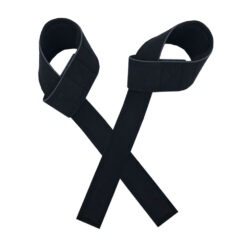The Ultimate Guide to Custom Wrist Wraps: Enhance Your Workout Performance
Understanding the Importance of Wrist Wraps in Workout
Wrist wraps are essential accessories for athletes, weightlifters, and anyone engaged in heavy lifting or strength training. Designed to provide additional support to the wrist joint, wrist wraps are typically made of durable fabric that can be tightly secured around the wrist. This fastening helps to stabilize the joint, reducing excessive movement and mitigating the strain on ligaments and muscles during strenuous activities.
Incorporating wrist wraps into workout routines can significantly enhance wrist stability, which is crucial for maintaining proper form in various exercises. For instance, in movements like bench presses, overhead presses, and deadlifts, the wrists are heavily involved in bearing and controlling the load. With the additional support of wrist wraps, lifters can achieve better weight distribution and grip, thereby enhancing overall performance. This stability is paramount in preventing injuries such as sprains and strains, which can derail progress and lead to extended downtime.
Moreover, wrist wraps prove to be particularly beneficial in scenarios demanding maximal lifting or when tackling high-repetition sets. For powerlifters and bodybuilders, especially, the use of wrist wraps can prolong the duration of their training sessions by delaying the onset of fatigue. This means that athletes can push their limits further without compromising safety or risking overuse injuries.
Among their many benefits, wrist wraps also play a role in boosting an individual’s confidence. Knowing that their wrists are adequately supported allows gym-goers to focus more on the exercise at hand rather than on potential discomfort or mishaps. Despite the clear advantages, there are common misconceptions surrounding the use of wrist wraps. Some believe that reliance on these accessories might weaken the wrists over time. However, when used correctly and not as a crutch, wrist wraps can be a pivotal addition to a well-rounded training regimen.
In summary, wrist wraps are not just for professional athletes; they provide critical support, enhance performance, and contribute to safer workout routines for individuals at all levels of strength training and heavy lifting.
Choosing and Customizing Your Wrist Wraps: What You Need to Know
When selecting and customizing wrist wraps, it’s important to consider several key factors to ensure they align with your fitness goals and preferences. One of the first considerations is the material. Popular options include cotton, nylon, and elastic blends, each offering different levels of stretch, support, and durability. For instance, cotton offers a soft and breathable feel, while nylon and elastic blends provide a snug fit and excellent support.
Another critical aspect is the length and width of the wrist wraps. Shorter wraps (12 to 18 inches) are suitable for general fitness or lighter workouts, whereas longer wraps (24 to 36 inches) are ideal for heavy lifting and providing enhanced support. The width of the wraps, typically ranging from 2 to 4 inches, should also match the size of your wrists and the level of support you desire. Wider wraps offer more stability, while narrower wraps allow for greater flexibility.
The closure type is another important consideration. Velcro closures are overwhelmingly popular due to their ease of use and adjustability. However, some athletes may prefer wrap-around or buckle closures for a more customized fit. It’s essential to select a closure type that offers both security and comfort throughout your workout.
Custom wrist wraps provide significant advantages over generic ones, as they can be tailored to your specific needs. Customization allows for adjustments in size, ensuring a perfect fit that maximizes both support and comfort. Additionally, customizing wrist wraps can enhance their aesthetics. Many manufacturers offer a variety of colors and patterns, and some even provide options to add personal logos or messages, making your gear uniquely yours.
To ensure your custom wrist wraps fit perfectly, measuring your wrist size accurately is crucial. Using a flexible tape measure, wrap it around the narrowest part of your wrist without pulling too tight. This measurement will guide you in selecting the right size to fully benefit from your wrist wraps.






Reviews
There are no reviews yet.